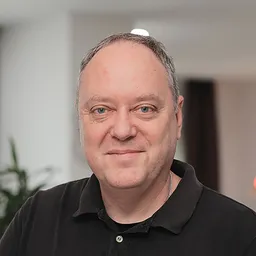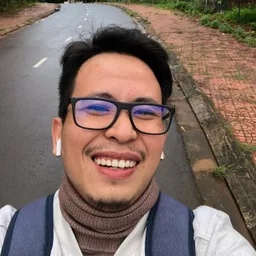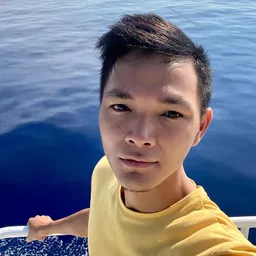Brio Bottom Load Water Dispenser (CLBL420V2) Review
Hands on review and testing of the Brio Bottom Load Water Dispenser (CLBL420V2). Find out why there are better machines to buy.
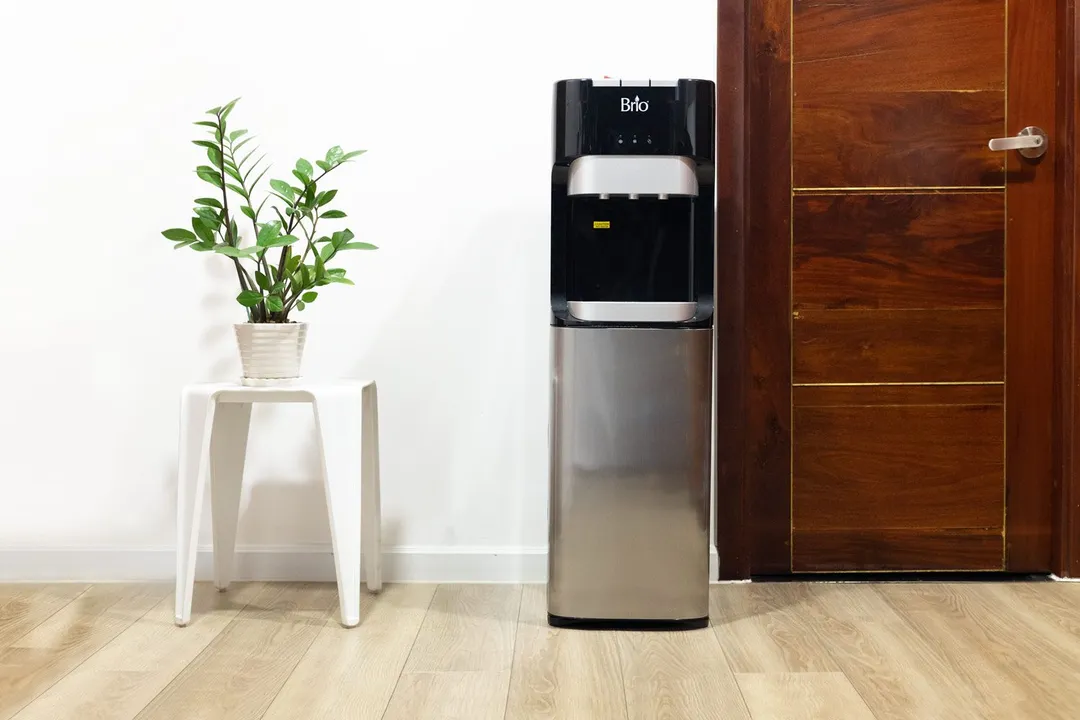
Overall Verdict
We purchased the Brio 400 in order to evaluate a more budget-priced bottom loading water cooler dispenser. Of the initial nine machines we purchased for testing, only the Brio 400 arrived not in working order.
The cooling function on the machine failed to work, but the hot water was fine. However, considering design flaws and questionable build quality, we decided not to make any warranty claim. Furthermore, the hot water performance was below par.
In terms of dispensing water, the buttons were poor quality, especially the hot water safety mechanism. The working indicators on the panel were not intuitively positioned, the machine lacked a power status indicator, and the cabinet door showed poor workmanship.
The Brio 400 is an older series and even considering its lower price, we would not recommend it as a worthwhile water cooler dispenser to buy. We do, however, hope to test other Brio models in order to gauge the quality of the brand overall.
Things We Like
- Hot water temperature
- Contrasting color scheme
Things We Don’t Like
- Overall performance
- Panel indicators
- Buttons
- General build quality
Brio is a fairly well-established name in water cooler dispensers. They carry a full product range including top loading, bottom loading, countertop, and POU filter systems. This Brio 400 is one of their older models with the 500 and 600 being the newer series.
Key Specs
Where to Buy Price at publication $224.62
*You help support HealthyKitchen101's product testing and reviews by purchasing from our retail partners.
Compared to Other Water Cooler Dispensers
3.2 Performance
The Brio 400 was one of our major disappointments in the testing room. Not only was the build quality sub standard, but parts of the design were flawed and the performance wanting.
In part, the machine we purchased was faulty and failed to cool the water. Considering the poor design and build quality, we decided not to request a replacement and to forgo the cold water testing.
8.0 Hot Water Test
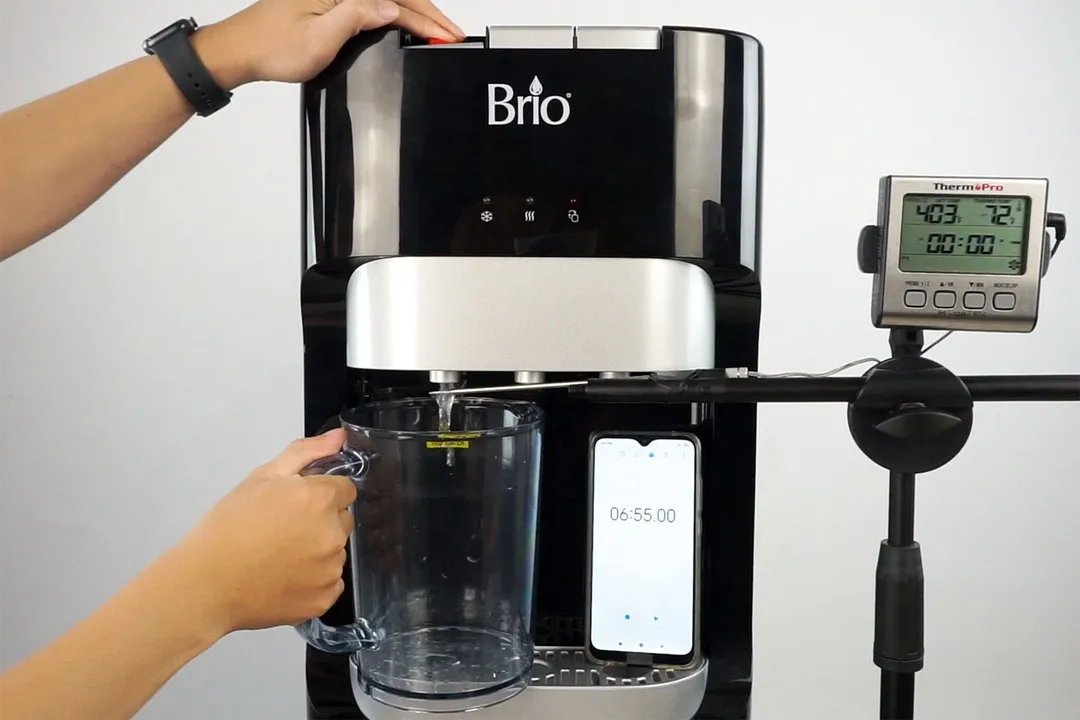
For this Brio 400, only the hot water temperature test measured up to standard. The heating time was comparatively lengthy. Additionally, the flow rate was significantly faster than advertised and likewise also unfavorable.
Heating Time Comparatively Long (6.5 / 35%)
The Brio took approximately 3 min 6 sec to heat 8.5 fl. oz. (250 ml) of water. This was one the slowest times we measured. Compared to machines with a similar hot water tank capacity, such as the Avalon A1, you have to wait a little longer for the tank to fill and reheat. The time to reheat a refilled tank was often seven and a half minutes, and performance was erratic.
Temperature a Good Standard (10 / 45%)
The highest continuous flow temperature measure was 198 ℉ (92.2 ℃) which was pretty much the same as most of our top performing machines. It also matched the maximum temperature advertised in the product specifications. This temperature also matched our top benchmark as per our hot water test procedure.
Serving Capacity as Claimed
In a single draw, the Brio 400 dispenses on average 18.07 fl.oz (535 ml) at its optimal temperature. That’s enough for two 7.4 fl.oz. (220 ml) paper cups at the optimal temperature.
We also measure the back-to-back or single draw volume until the temperature drops by 3℃ and the heating light switches on some seconds later.
The full single draw volume was around 690 ml. This means you can get two large mug cups back-to-back, with one at a slightly lower temperature. This, however, is not so good in terms of efficient design.
With heating times factored in, the amount of hot water per hour works out to 256 fl. oz. (4.6 L). This was pretty much in line with the manufacturer's specifications.
Flow Rate Too Fast (6 / 20%)
Not all water cooler dispenser manufacturers clearly mention the flow rate of their machines. Brio, however, lists the flow rate as 35 ml/sec. Our favored benchmark is slightly less at 34 ml/sec, however, this Brio 400 repeatedly recorded 42 ml/sec (1.4 fl.oz.). The hot water flowed a little too swiftly, which reflected the faultiness of the machine.
Failed Cold Water Test

Of the eight water cooler dispensers we initially purchased for our first round of testing, this Brio 400 was the only machine to arrive not in full working order. Another budget machine, the Costway, actually had a small leak but we could still do the testing.
We hope to test other Brio models to gauge more accurately the quality and performance of the brand overall. For other issues we encountered, read more under ‘Ease of Use’ and ‘Design’ further below.
5.9 Design
The Brio 400 is a machine lacking in design foresight, especially concerning the working panel indicators and buttons. The build quality of the cabinet door and the drip tray were noticeably poor. On the other hand, we appreciated the color design with light gray offset against the black panel and sides.
In the Box

- Assembled machine
- Water probe with bottle cap
- Detachable drip tray
- English language manual
- Warranty and support card
The Brio 400 came boxed with the drip tray wrapped in plastic and placed within the cabinet. An English language manual, with a warranty and support card, were also placed neatly in the cabinet. The water probe was likewise wrapped in protective plastic.
Dimensions

5.0 Build Quality

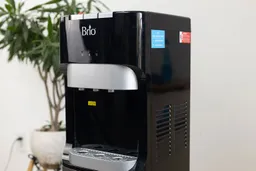
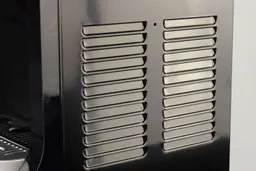
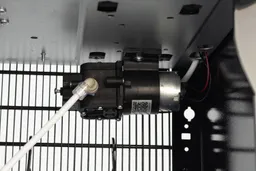
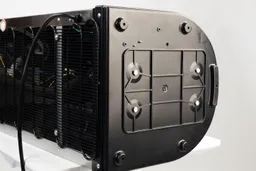
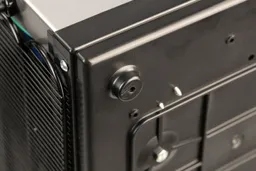
The quality of the side panels with ventilation slats is much the same as other similar machines. The door and cabinet, however, was noticeable for its poor workmanship and low quality.
Other build quality issues are highlighted with the overall poor performance, button designs, panel design flaws, and cheap quality of the drip tray.
The only thing about the design we actually liked was the color scheme of light gray contrasted to black. This gave the machine a brighter appearance and made it easier to see the dispensing nozzles.
5.5 Panel & Indicators
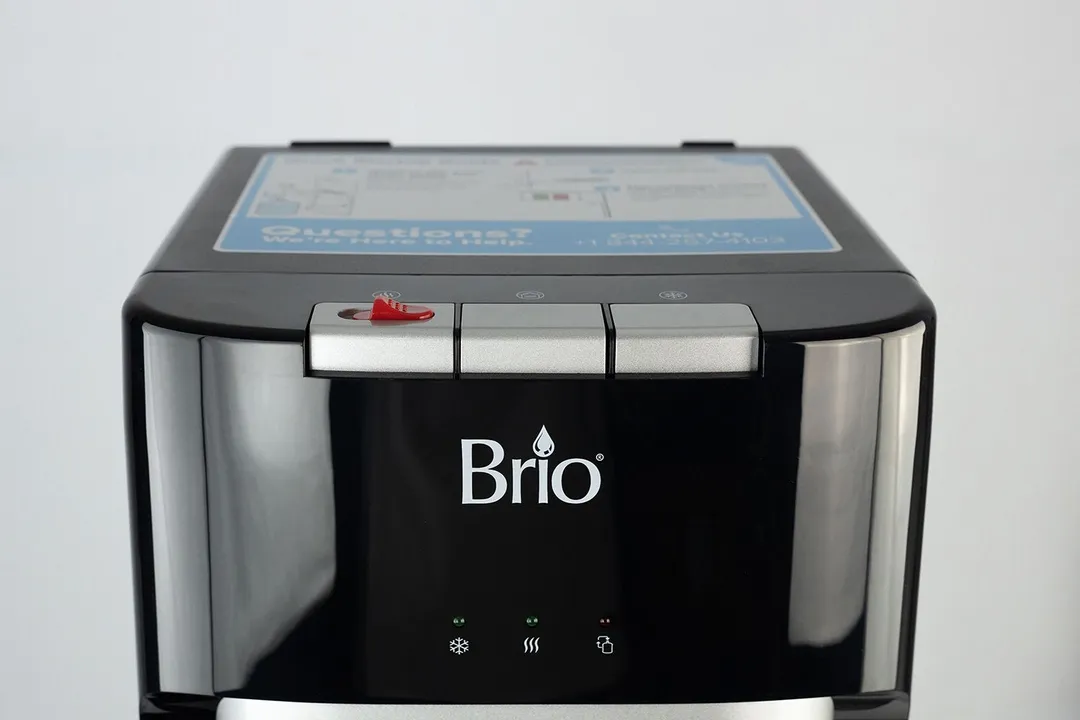
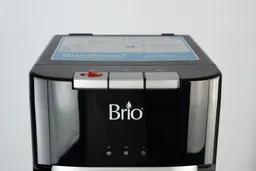
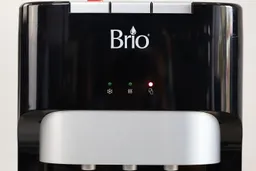
The first thing to notice about the panel is the lack of a power status button. The only advantage to this would be if the machine were placed in a bedroom or other sleeping space.
Secondly, the icons are not logically positioned. The indicator for cooling is situated more or less below the hot water dispensing zone, and the heating icon is to the right in the middle.
The empty bottle and pump indicator is on the far right. Although this indicator came on when the door was opened or the water was pumping, it failed to alert when the bottle was actually empty.
7.5 Water Inlet Controls
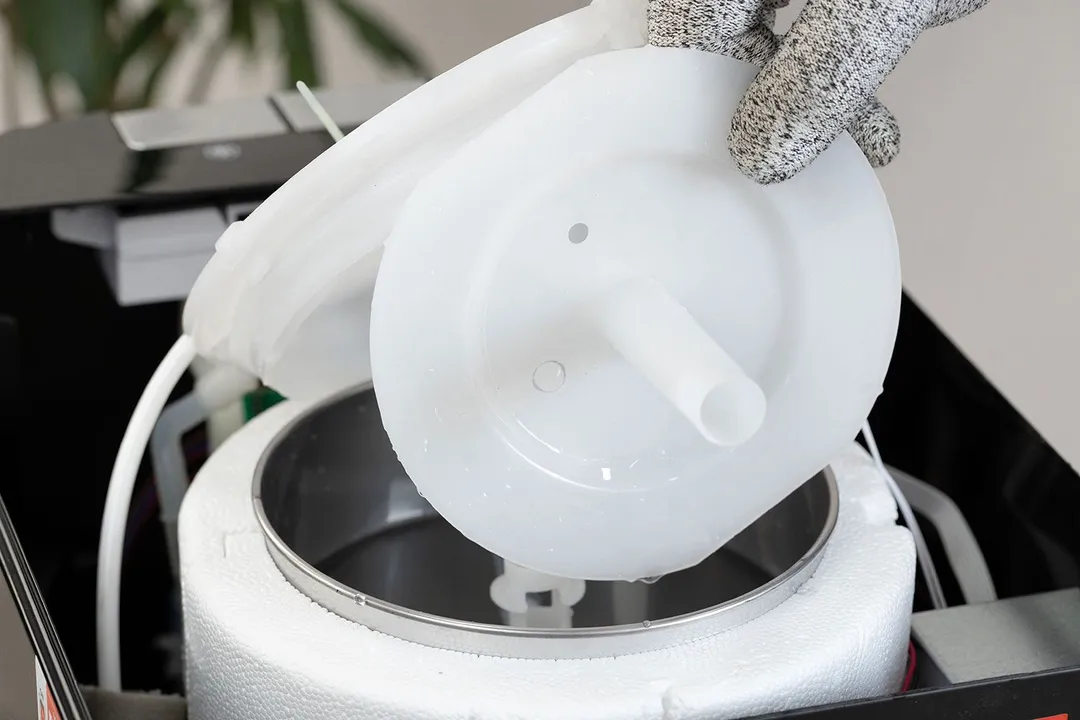

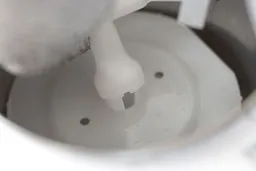
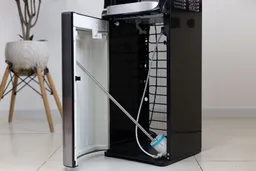
The bottle cap and connected water hose are of decent quality and a standard generic design often seen in other machines. The water pump is attached to the cabinet ceiling, but it lacks a rubber bracket or vibrational support.
The water probe is a straight rod and therefore not as efficient as the more usual bended design. We found the water baffle to be of a standard generic quality, with no apparent flaws, and it was easy to remove and replace.
Water Dispensers
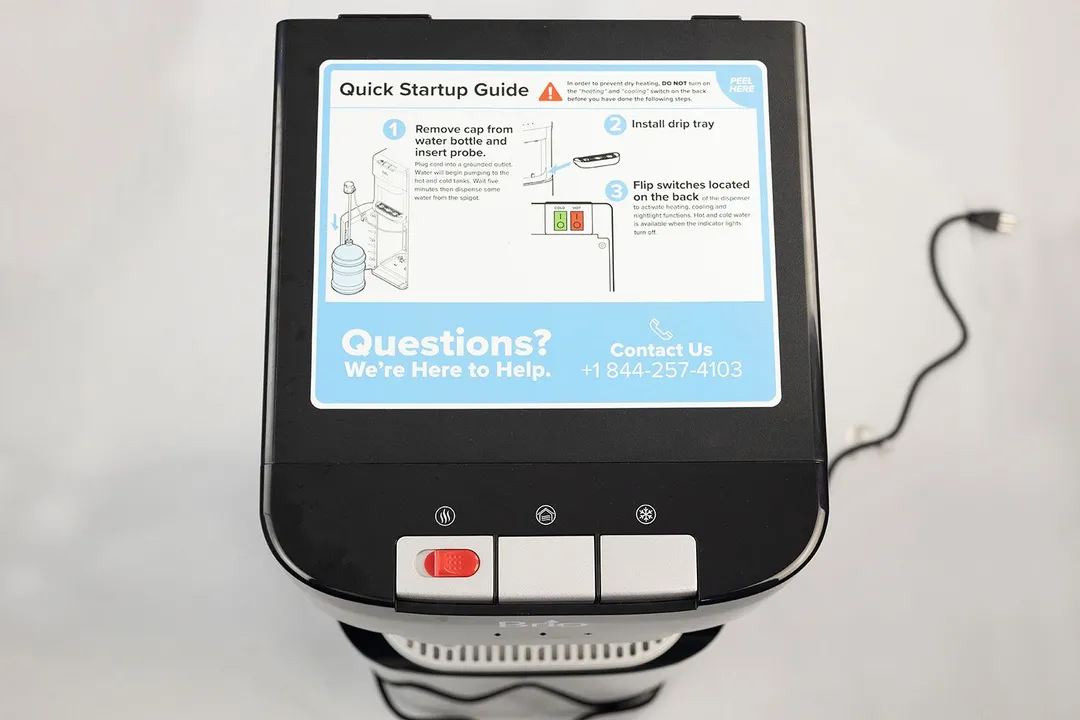
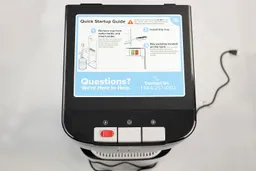
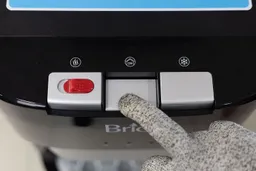

The buttons, at least, are well sized and built into the front of the machine, so not protruding. Some may like this look, but we found the design lacking in terms of hygienic upkeep because you can’t clean between the buttons so easily.
The nozzles, however, were easy to clean as detailed in our ease-of-use evaluation. The traction of the buttons when dispensing water is not bad—perhaps a little stiff— but not as stiff as the buttons on another machine we tested, the Euhomy.
7.3 Drip Tray
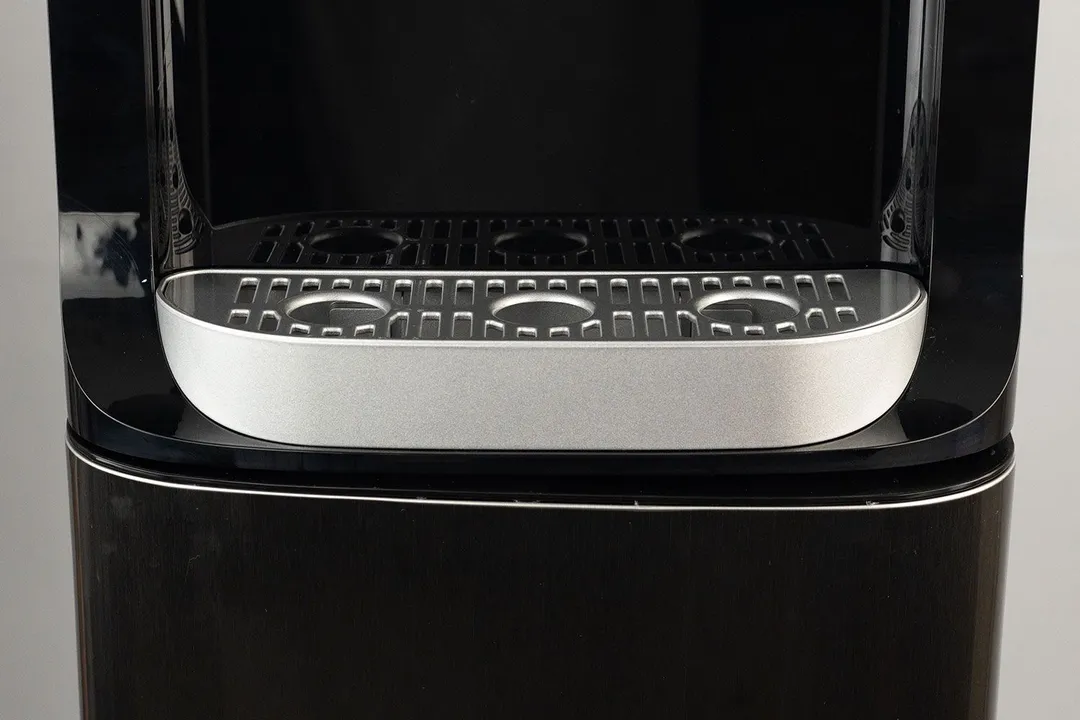



The drip tray is relatively small and doesn’t fit large cups so well, so sometimes it’s best to hold the cup while dispensing. Additionally, the tray fixture is not very secure and a child could possibly tug it out. The plastic is a little flimsy and not a hard and solid design. The gray color, however, is a nice contrast and makes it easy to see the water level.
Rear Switches

There are only two switches which are to the rear right of the machine—left for the cold water tank, and the right for hot.This model does not have an ozone function or night light. Each switch is color coded with a text label. Their alignment is somewhat haphazard indicating poor workmanship.
Door and Cabinet
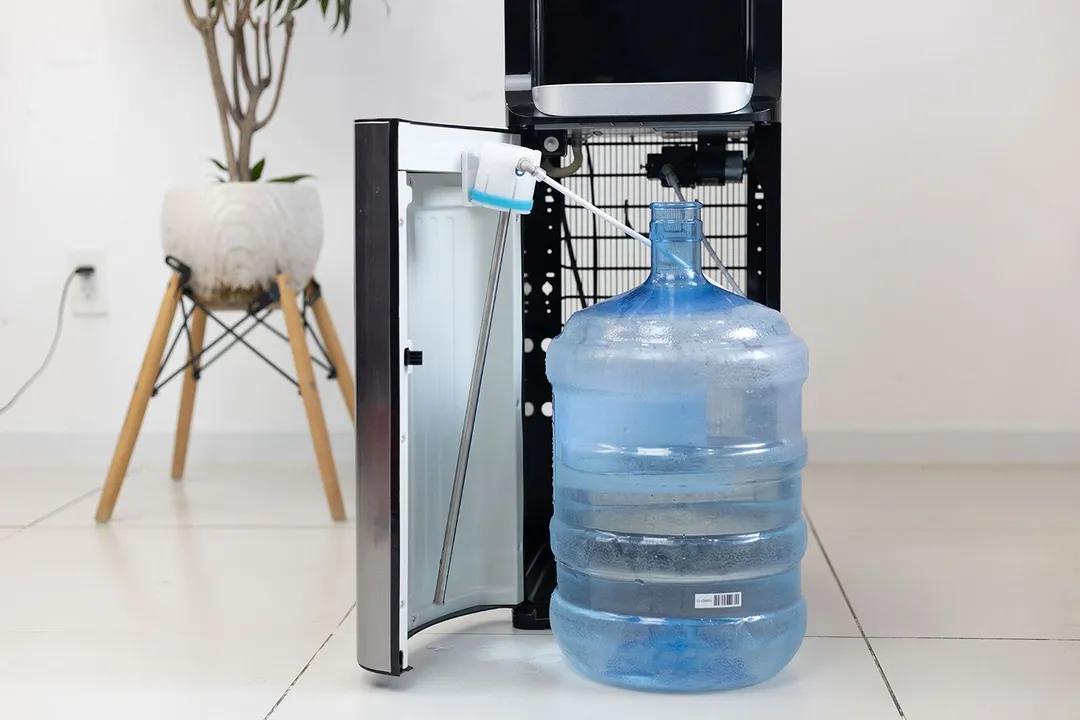
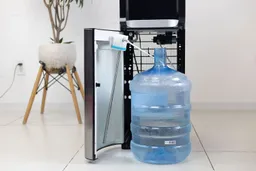

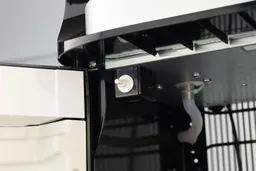
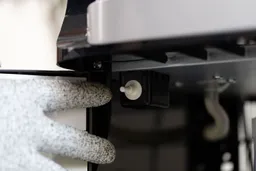
To open the door, it’s best to grip it from the bottom since there is no side or pocket handle. On closer inspection, we found the inside panel badly aligned indicating poor workmanship. The white color does, however, add to a somewhat brighter feel.
Cord and Plug
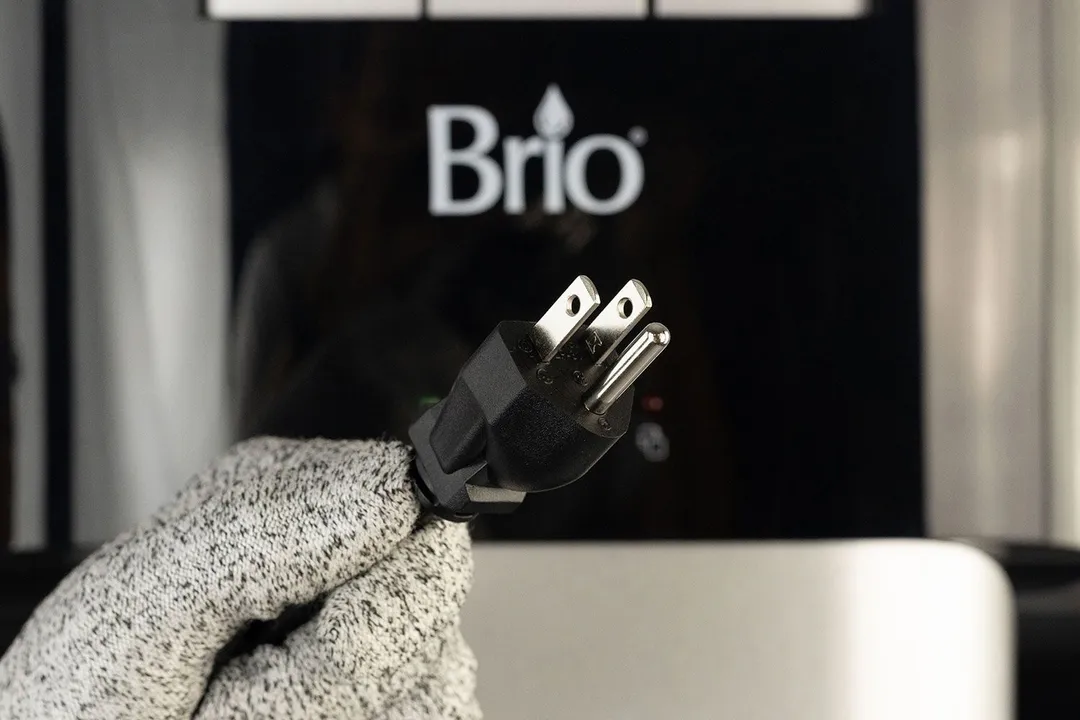

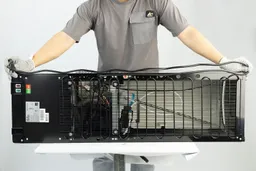
The plug of the Brio 400 water cooler dispenser is the required three-pronged plug with two flat pins and a round grounding prong. The cord is likewise a standard 73 inches long.
6.8 Ease of Use
The Brio 400 only measured up to competitive standards, as per our evaluation criteria, when it came to changing the water bottle. The buttons were somewhat clunky, the hot water safety uncomfortable to operate, and sanitary design was not ideal. We also encountered issues with periodic descaling.
6.5 Dispensing Water
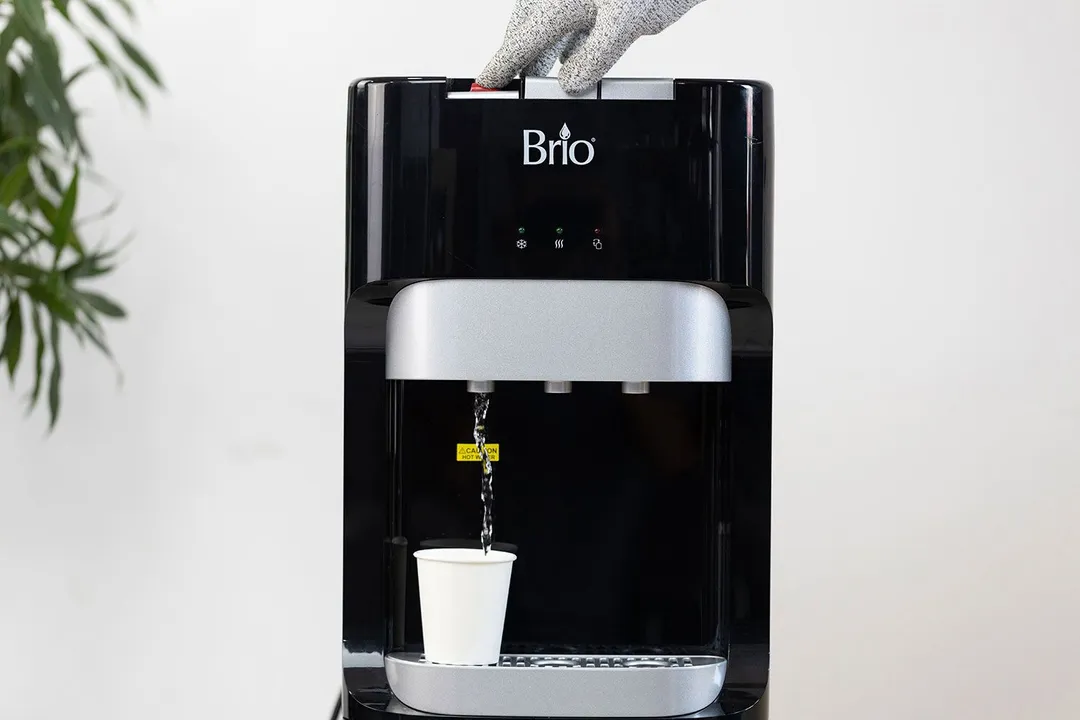
The main issue with dispensing water was the faster than normal flow rate. Small cups filled quite rapidly, whereas for larger cups this was not such an issue. Additionally, the buttons look cheap and make a noticeably clunky sound. In our testing, we have encountered much better designs with more seamless experiences of dispensing water.
7.5 Hot Water Safety


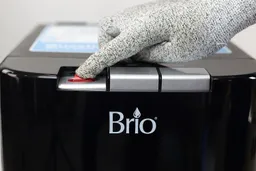
Although the hot water safety mechanism is similar in appearance to other types of button operated machines, the experience was not so ideal. In our testing, the hot safety clip required more force to push sideways and the downward movement was not so smooth. The design is functional, but doesn’t demonstrate good technical design.
8.0 Bottle / Filter Changing

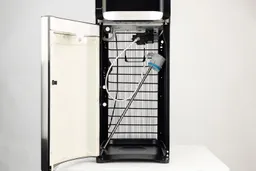

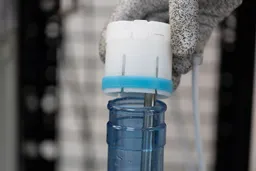

The water straw or bottle probe of the Brio 400 is a simple straight rod. In most cases the rod is bent for better positioning and maximum draw of water from large and small bottle types. The bottle cap design is fairly generic, but the straight probe indicates more of an ‘economy’ design.
6.3 Cleaning
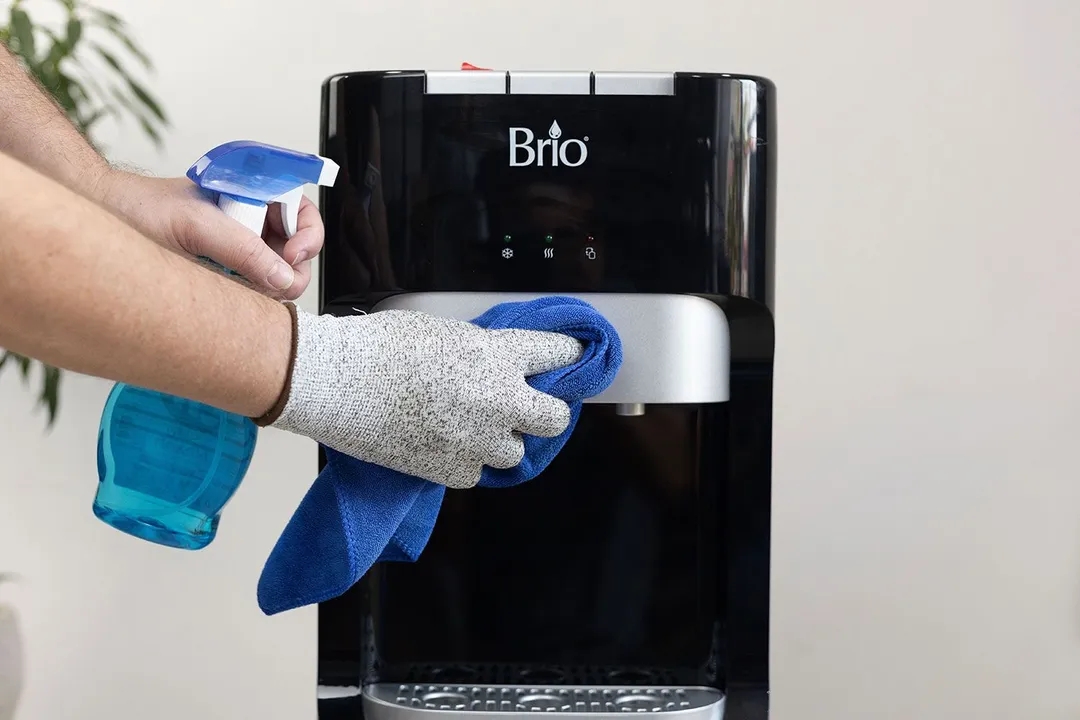
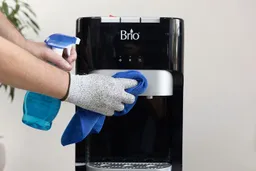
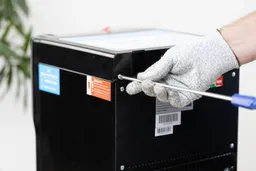

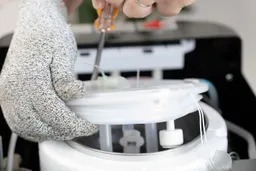
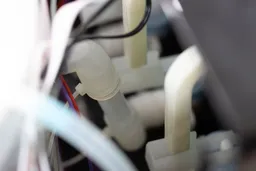
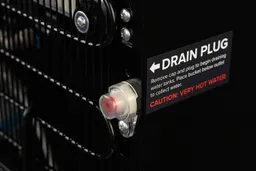
The all plastic body is not prone to getting fingerprints so it’s also easy to wipe and keep clean. The close-up design of the buttons, however, makes it difficult to clean in between them.
As with other button operated machines, the spouts are easy to clean around. Since this machine does not have ozone or UV cleansing, you can regularly clean around the inside of the nozzles with a cotton Q-tip.
As for periodic descaling, opening up the top of the machine and accessing the cold water tank was much the same as similar machines. The quality of the water baffle was fine and the design fairly generic.
One issue we did have, however, was with draining the machine. The drainage plug is a good design but drainage was poor. The water stream was weak and it tended to dribble and mess a lot of water. Furthermore, there were no instructions in the manual about how to do periodic descaling.
Behind the review
Roger Shitaki is a writer, author, and editor. His niches are household appliances, health & wellness, and travel. He’s a freelance contributor to a Tokyo lifestyle website and a leading ophthalmology magazine in Asia.
Lap is Head of the Research, Testing, and Review Team (RTR Team) at HealthyKitchen101.com, where he directs and supervises the testing of kitchen gadgets and appliances.
Nguyen Ntk is a graphic designer, photographer, and videographer whose philosophy centers around respecting and celebrating the beauty of reality. Through his lenses, Nguyen strives to capture the true essence of objects and events, showcasing and highlighting authentic features without distortion or exaggeration.
